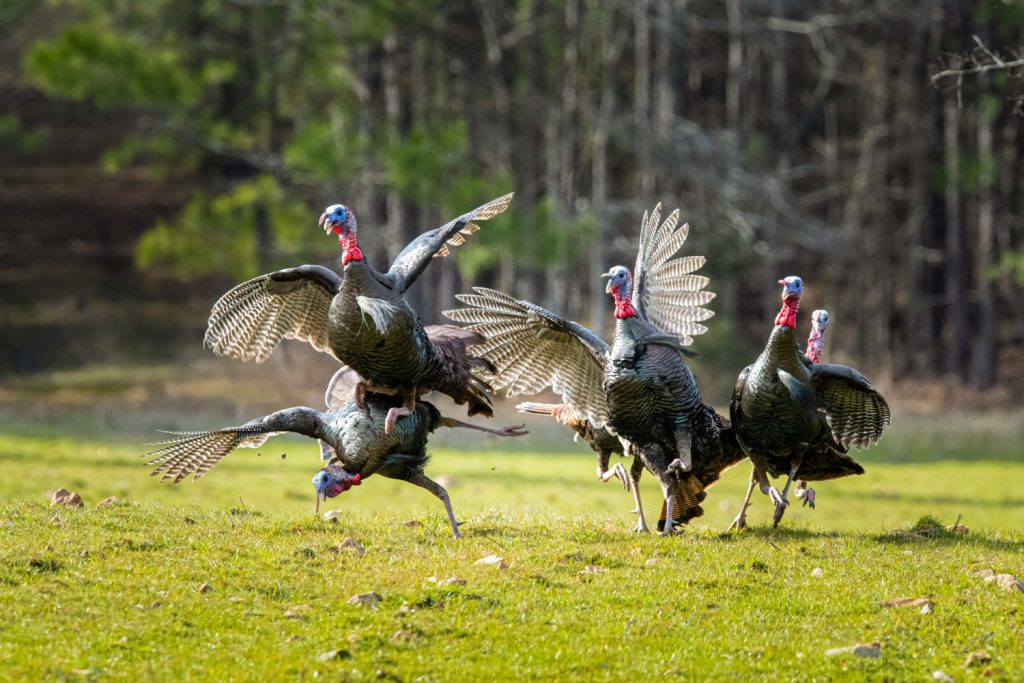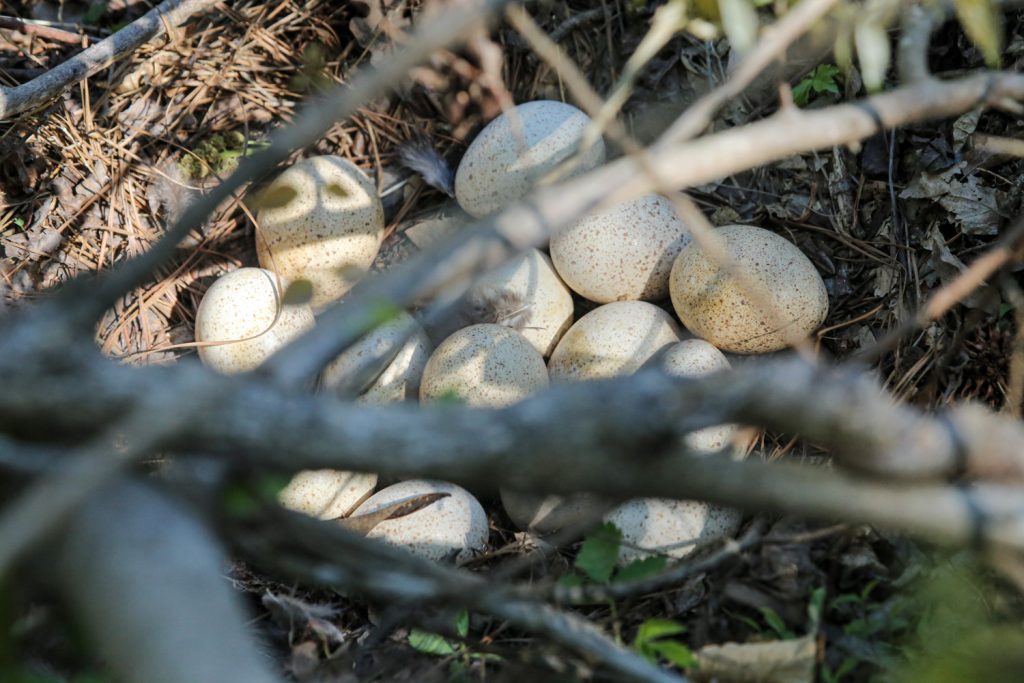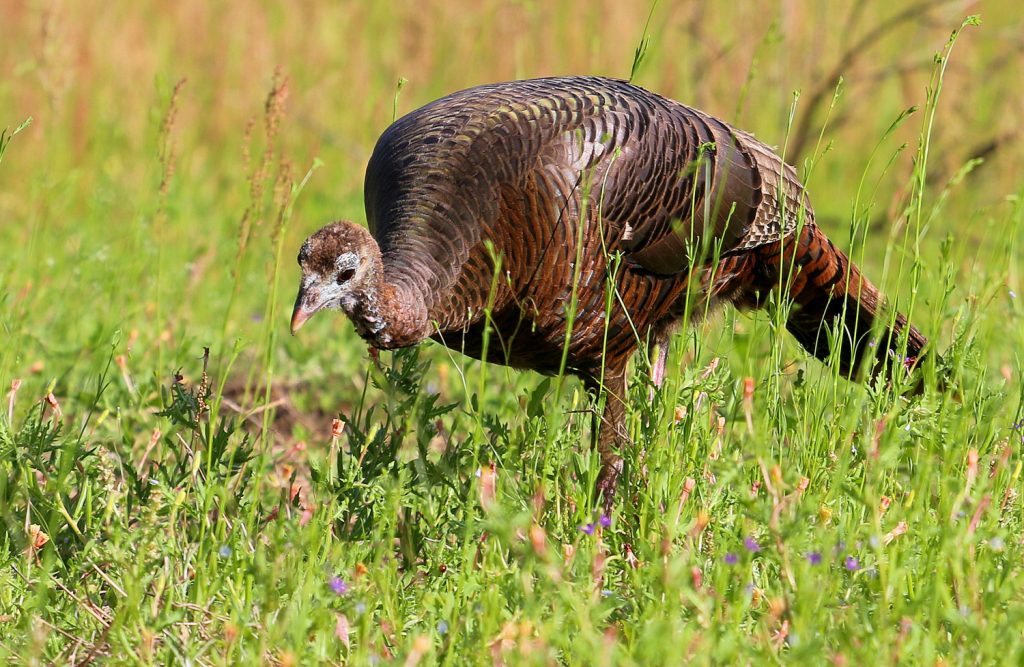There are fascinating breeding rituals and complex social dynamics in the world of wild turkeys. Understanding these behaviors is crucial for both hunters and nature enthusiasts alike.
This comprehensive guide delves into the captivating world of wild turkey mating seasons, exploring the unique characteristics of each species and their regional variations.
The Science of Turkey Breeding: A Delicate Dance of Hormones and Sunlight
The lengthening of the days in the spring stimulates wild turkeys to breed by causing a hormonal reaction that prepares them for their yearly mating rituals. Unseasonable weather patterns, however, can affect when these activities occur; warmer temperatures hasten the breeding process, while colder temperatures do the opposite.
Understanding these environmental cues is essential for predicting and observing turkey breeding behavior,
Pecking Order and Dominance: Establishing the Hierarchy
Before the breeding season kicks off, male turkeys engage in fierce battles to establish dominance and secure their position in the pecking order. This hierarchy plays a crucial role in determining mating rights and access to females.
Interestingly, turkeys have separate hierarchies for males and females, with stable pecking orders within flocks of the same sex being a common trait across all wild turkey subspecies.
Courtship Rituals: A Display of Gobbles and Strutting
Once the pecking order is established, the stage is set for the captivating courtship rituals. Male turkeys, known as gobblers, engage in a dazzling display of gobbling and strutting to attract potential mates.
The astute hens watch these exhibitions and choose the gobbler they believe is most deserving of a mate.
The Nesting Process: A Journey of Secrecy and Motherhood
During the nesting season, hens become extremely reticent, painstakingly looking for the ideal place to lay their eggs. Usually made of shallow depressions from the hen’s scratching and squatting habits, these nests
The perfect nesting site strikes a balance between protection and visibility, enabling the hen to monitor her surroundings and guaranteeing the safety of her future progeny.
Egg-cellent Incubation and Hatching: A Mother’s Devoted Care
Over the course of two weeks, hens lay 10 to 12 eggs, which they carefully incubate for 26 to 28 days. The would-be mother only occasionally leaves the nest to feed during this time, frequently spending several days there in a row.
The hatching process begins with the poults, or baby turkeys, rotating within their shells until they create a complete break. The mother’s soft clucks guide the newly hatched chicks, imprinting them with her presence and initiating their social development.
Poult Development: From Fragile Chicks to Independent Juveniles
The first hours of a poult’s life are crucial, as they learn to respond to their mother’s calls and mimic her feeding behavior. Within a day, they are already exhibiting characteristic feeding, movement, and grooming patterns.
By week one, the poults are regularly dusting themselves with the hen, and by week two, they are capable of short flights. As they grow, they transition to a diet of mostly plant matter and learn to roost in low trees with their mother.
Survival of the Fittest: A Journey to Adulthood
Poults that survive past the first six weeks have a significantly higher chance of reaching adulthood. By 14 weeks, males and females become distinguishable by their body size and plumage.
As fall approaches, the pecking order among sibling groups is firmly established, and the young flocks are ready to integrate into the broader social structure of the surrounding population.
Regional Variations: Tailoring Your Approach to Specific Species
The timing of turkey mating seasons varies depending on the species and region. Here’s a breakdown of the approximate breeding seasons for different wild turkey subspecies:
- Eastern Wild Turkey: Breeding typically begins in late February or early March in southern habitats, extending to April in northern states. The cycle concludes with poult hatching by June or mid-summer in the north.
- Florida (Osceola) Wild Turkey: The breeding cycle starts slightly earlier than for eastern wild turkeys in other southern states. However, in southern Florida, gobblers may gobble during warm spells in January, several weeks before actual mating. Egg laying primarily occurs in March and April, with peak hatching in early May.
- Rio Grande Wild Turkey: Mating activities commence in March, with nesting peaking near the end of April. The 28-day incubation period results in most poults being present by the last week of May or early June.
- Merriam’s Wild Turkey: Some Merriam’s turkeys migrate from the foothills of the Rocky Mountains to higher elevations for summer breeding and nesting, returning to lower elevations for winter. Movement distances vary, but over 40 miles is not uncommon. These movements may differ annually and geographically, depending on snow conditions. Movements from wintering areas typically occur between mid-March and mid-April.
- Gould’s Wild Turkey: Gobbling activity for the Gould’s has been documented to begin in April and May in Mexico and from late April into June in New Mexico and Mexico. The Gould’s turkey has been studied the least and, as a result, has the smallest amount of information available about it.
Understanding these regional variations is crucial for hunters and wildlife enthusiasts to optimize their observations and interactions with wild turkeys during their breeding seasons.
The world of wild turkey mating seasons is a captivating spectacle of nature, showcasing the intricate behaviors and adaptations of these remarkable creatures. By understanding their breeding cycles, social hierarchies, and regional variations, we can appreciate their unique biology and contribute to their conservation efforts.
Whether you’re a seasoned hunter, a passionate nature observer, or simply someone with a deep curiosity about the natural world, this guide provides valuable insights into the fascinating world of wild turkey mating seasons.
The life of wild turkeys is both fascinating and dynamic.
Whether you’re studying wild turkeys to help fill your freezer with food or you just want to learn more about them, understanding their daily habits and breeding season behavior will help you in your quest.

Dominance and Pecking Order
- Turkeys have home ranges, not territories.
- With similar home ranges, birds fight for supremacy by recognizing members of their own species.
- Males and females have separate hierarchies.
- All wild turkey subspecies seem to share stable pecking orders in flocks of the same sex.
- The primary causes of breeding behavior are the lengthening of the days in the spring and the subsequent hormonal response.
- Unusual warm or cold spells may marginally boost or reduce breeding activity.
- Patterns of male courtship behavior that entice women include strutting and gobbling.
- The male recognizes when it’s time to copulate when the hen bends to pick the gobbler for matting.

- Hens hide in search of a place to nest before laying eggs.
- Nests are small indentations created by squatting, scratching, and egg-laying.
- The ideal understory for hens is moderately dense so they can have protection and a view.
- Hens lay between 10-12 eggs during a two week period.
- Continuous incubation begins when the last egg is laid.
- The hen will only occasionally leave the nest for food, sometimes staying there for several days at a time.
- Eggs will be incubated for 26-28 days. The hen sits motionless and turns the eggs around once every hour.
- The first stage of hatching is called pipping, when the poult rotates inside the shell and chips a whole break around the large end of the egg.
- Hens react haphazardly, clucking softly to begin forming bonds with the baby birds.
- Imprinting is a special kind of learning that speeds up the social development of poults into adults.
- After hatching, damp poults take 12 to 24 hours to free themselves and dry completely, allowing them to go outside with the hen.

How to hunt the turkey breeding season
FAQ
What month do turkeys mate?
Are turkeys aggressive during mating season?
How do you know when a turkey is ready to mate?
What time of year do turkeys lay eggs?
When do turkeys mate?
Cold and rainy weather can delay the onset of mating. Conversely, unusually warm weather in February or March can speed up the breeding ritual. During late winter and early spring turkeys congregate by sex in flocks. Hens hang with hens and their poults, while gobblers run together.
Why is the wild turkey mating season important?
The wild turkey mating season is an important time for the species as it is the time when reproduction occurs. Hens will lay eggs and incubate them, while toms will continue to attract and mate with hens to ensure the survival of the species. This time is also important for hunters as it is the prime time for turkey hunting.
When do turkeys start breeding?
Northern wild turkeys may start breeding in mid-April and lay eggs in May. Depending on the species and location, turkeys breed from February/March through late spring/early summer. What is the peak of turkey breeding season?
What factors affect the wild turkey breeding season?
A variety of variables influence the wild turkey breeding season. Increased sunshine hours boost male turkey sex hormones and mate desire. The mating season is also affected by the physical condition of female turkeys after the winter, the spring green cycle, and the weather. Hunting may interrupt turkey mating by interfering with gobbling.
